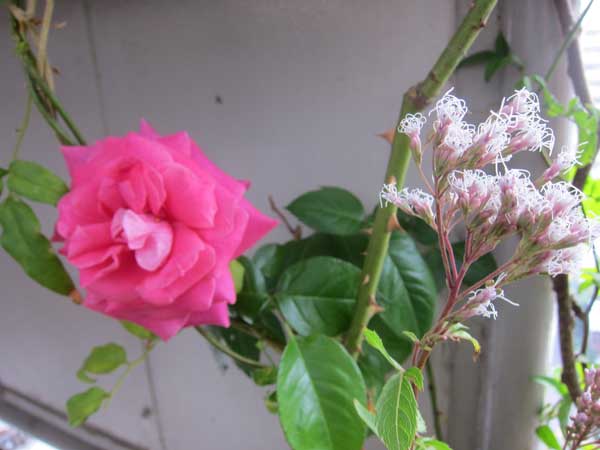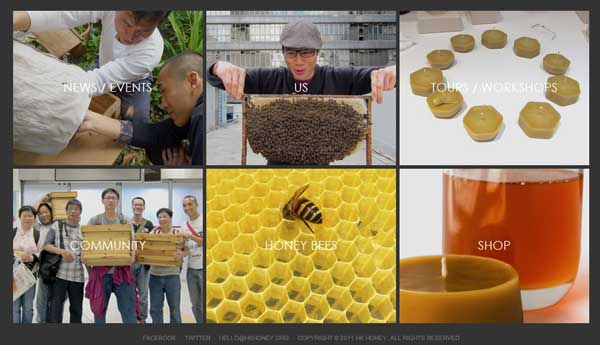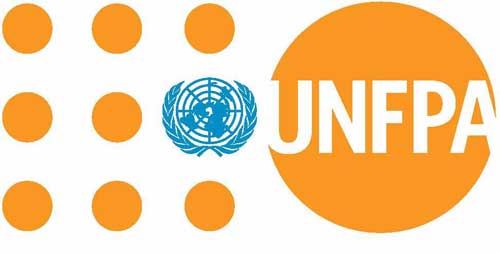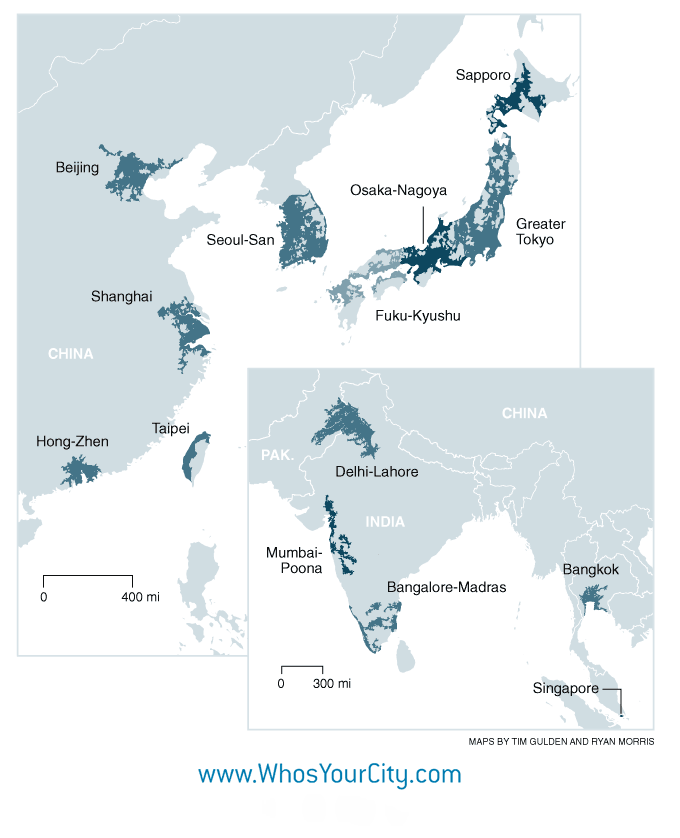
I read Richard Florida’s 2008 Who’s YOUR City? book, a “self-help” book about the central importance of where we live and the outsized opportunities in the world’s leading mega-cities. Drawing from Jane Jacobs and a wealth of statistics, Florida analyzes how the world has become “spiky” with concentrations of innovation and economic activity in mega-regions. Despite globalization and technology, place has become ever more important for individual happiness and economic growth.
For individuals, Florida argues that the choice of where to live is the biggest factor in our lives, happiness and communities. And for urban leaders, his writing and consulting describes how to become a magnet for the creative class and economic growth by promoting the arts, tolerance, talent and technology.
Tokyo is the largest mega-region, with 55 million people, and appears to far exceed all other mega-regions in the innovation map below. There are many other interesting maps on his website, although heavily focused on the United States and Canada.
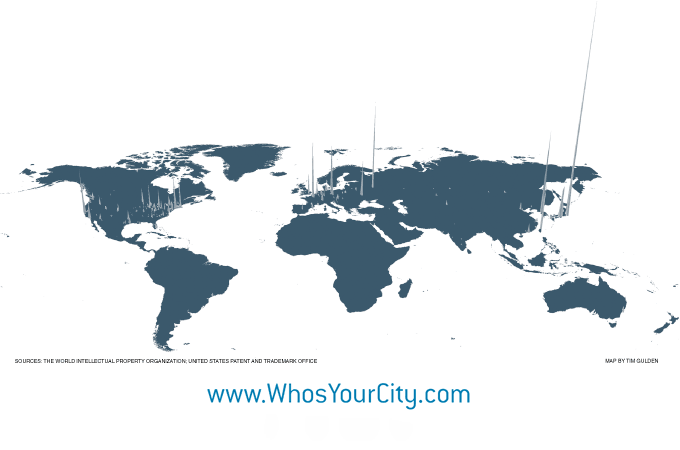
Since Florida is increasingly focused on sustainable urban living, it would be interesting if he can correlate urban plant and biodiversity levels with human happiness and economic activity. Somehow I imagine this is a topic he will be investigating soon.
